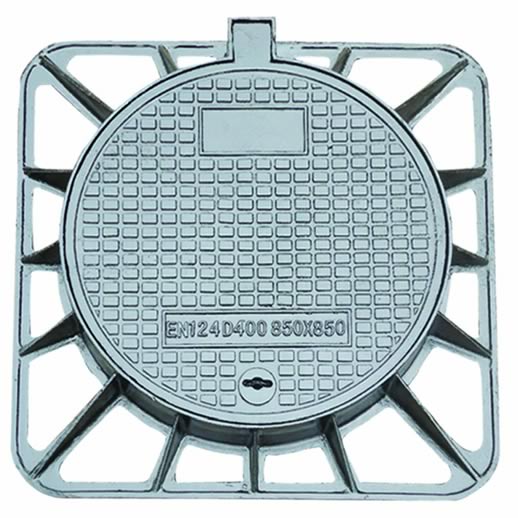gully grating types
Gully Grating Types A Comprehensive Overview
Gully gratings are essential components in drainage systems, designed to channel rainwater and runoff efficiently away from road surfaces, pavements, and other areas susceptible to water accumulation. Understanding the various types of gully gratings is crucial for urban planners, engineers, and landscape architects looking to optimize drainage effectiveness while maintaining aesthetic appeal. This article explores the common types of gully gratings, their applications, and key factors to consider when selecting the right type for specific environments.
1. Linear Gratings
Linear gratings are one of the most prevalent types of gully gratings. They feature a long, narrow design and run parallel to the flow of water, making them effective for collecting water from extensive surface areas, such as roads and parking lots. Linear gratings are typically used in urban environments where large volumes of runoff are generated. They can efficiently direct water to underground drainage systems, preventing flooding and water pooling.
Linear gratings are often made from various materials, including metal, concrete, and plastic. Their selection depends on the required strength, load-bearing capacity, and environmental conditions. For instance, galvanized steel gratings are common in high-traffic areas due to their sturdiness and resistance to corrosion.
2. Slot Gratings
Slot gratings, characterized by their narrow slits or openings, are designed to blend seamlessly with their surroundings. These gratings are highly functional in pedestrian areas, parking lots, and bike paths, as they are principally low-profile and provide minimal disruption to pedestrians while efficiently draining water.
Slot gratings can be made from various materials, such as cast iron or stainless steel, ensuring they withstand the elements and heavy foot traffic. Their design also minimizes the risk of debris blockage, promoting effective drainage throughout the seasons.
3. Square and Rectangular Gratings
Square and rectangular gratings are traditional gully grating designs used in various applications, such as residential driveways and commercial environments. Their shape allows them to cover larger drainage openings, making them suitable for areas with significant water accumulation.
These gratings are versatile and can be made from concrete, cast iron, or polymer composites. When choosing square and rectangular gratings, it’s essential to consider their load capacity, ensuring they can withstand the weight of vehicles or heavy foot traffic without deforming or breaking.
gully grating types

4. Bespoke Gratings
Bespoke or customized gratings are designed specifically for unique architectural or environmental needs. These gratings can be tailored in terms of shape, size, and material to suit a project’s requirements. For example, a park might require a specially designed grating that harmonizes with its landscape, using materials that blend in with the natural environment while ensuring functionality.
Bespoke gratings allow for creativity in both design and drainage functionality, making them an appealing option for architects and designers aiming to achieve a specific aesthetic while ensuring optimal drainage.
5. Eco-Friendly Gratings
With growing awareness of environmental sustainability, eco-friendly gully gratings are gaining popularity. These gratings are constructed from recycled materials or designed to enhance natural drainage systems. For instance, permeable grates allow water to flow through, promoting groundwater recharge and reducing surface runoff.
Additionally, eco-friendly gratings often feature designs that support biodiversity, such as creating habitats for small wildlife or using natural materials that encourage plant growth. These gratings serve a dual purpose, facilitating efficient drainage while contributing positively to the ecosystem.
Key Considerations When Choosing Gully Gratings
Selecting the appropriate type of gully grating requires careful consideration of several factors. Key elements include
- Material Durability Ensure the chosen grating can withstand local environmental conditions, including weather, soil type, and potential chemical exposure. - Load Capacity Assess whether the grating can handle the weight of vehicles or foot traffic in the area it serves. - Aesthetics Consider how the grating design and material will fit into the overall look of the surrounding space. - Functionality Ensure the grating effectively channels water to prevent flooding and waterlogging in the area.
In summary, gully gratings play a vital role in drainage systems, with various types available to suit different environments and aesthetic needs. By understanding the characteristics and applications of each type, stakeholders can make informed decisions that enhance urban infrastructure while promoting environmental sustainability.
-
The Smarter Choice for Pedestrian AreasNewsJun.30,2025
-
The Gold Standard in Round Drain CoversNewsJun.30,2025
-
The Gold Standard in Manhole Cover SystemsNewsJun.30,2025
-
Superior Drainage Solutions with Premium Gully GratesNewsJun.30,2025
-
Superior Drainage Solutions for Global InfrastructureNewsJun.30,2025
-
Square Manhole Solutions for Modern InfrastructureNewsJun.30,2025
-
Premium Manhole Covers for Modern InfrastructureNewsJun.30,2025
